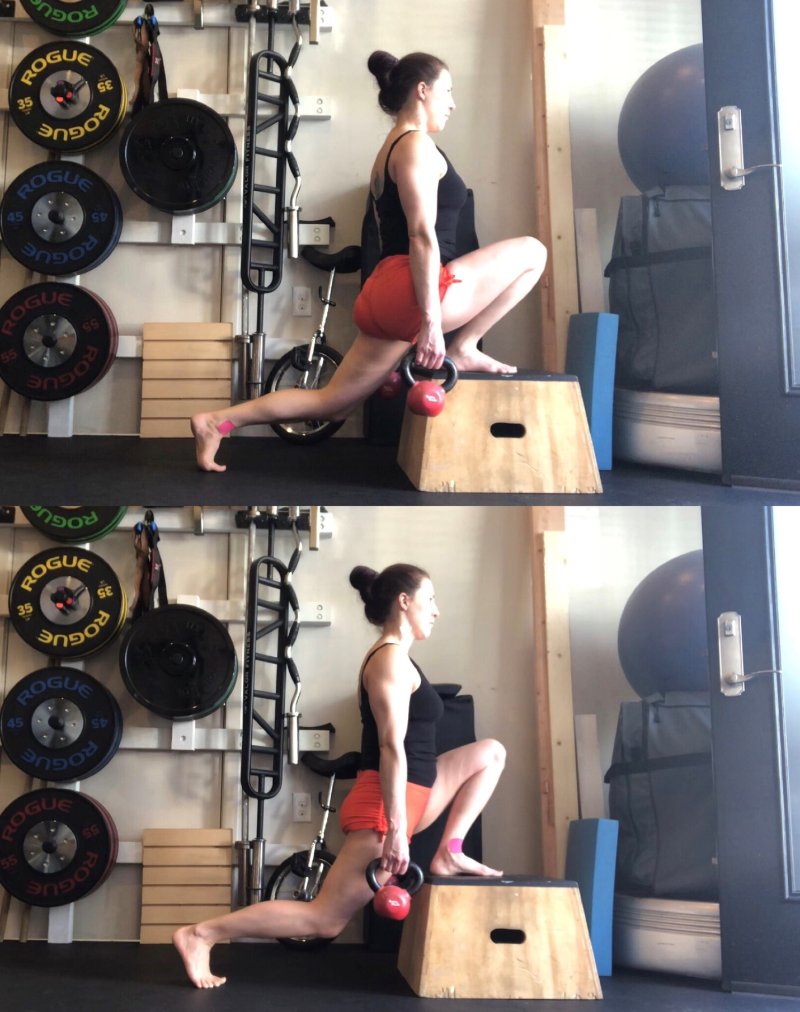Having to rebuild your strength and flexibility after an injury is soooo frustrating. It’s easy to get impatient and want to push harder than your body is ready for.
I pulled my hamstring the beginning of October, learning straddle beats in aerial rope class. Then I twisted my ankle in early February flying L-basing acro with an unfamiliar base. After doing mostly standing acro, I think I actually prefer being further away from the floor. Turns out you can’t bring your feet to the floor safely when you’re already almost there. Both injuries were on the left side. Both on days that my HRV (heart rate variability) was low, warning me that I should take it easy and that I was at a higher risk of injury. Not being able to move normally and do all the things that I’m accustomed to being able to do has been really hard.
It turns out that after some healing time, strength training a pulled muscle actually helps with the pain. Who knew? I had to start Romanian deadlifts with 10 lb kettlebells. Letting my brain be ok with where I was vs what I knew my healthy body could do was tough. I also lost some flexibility that I’m still working to get back. My ego doesn’t like to accept that I can’t do what I feel like I *should* be able to do. But trying to be where I think I should be instead of being where I am only leads to more injury.
My hamstring was finally feeling pretty good when I twisted my ankle. It’s gradually getting better, but I still have some pain and restricted range of motion. You don’t realize how much your ankle mobility affects the way your body moves until it can’t move normally. My knee can’t bend as far. I can’t squat down normally. Have I mentioned how impatient I am with myself? I keep having to remind myself that it’s ok to still be healing. To have to back up and relearn how to move, and remember that I’ll be better for it. Which brings me to the next part of this post: how to do a proper split squat.
I’m using a 12 inch box in these photos, because any lower is too much of a bend for my injured ankle. This is a great place to start if you have never done split squats and if you have limited ankle mobility. You might even need a higher box or step to do the move with proper form, and that’s ok! Be where you are. It’s more important to do the move correctly that to appease your ego and do it poorly. Yes, I’m speaking to myself here.
The photo on the bottom is my injured ankle forward, and the top is my un-injured ankle forward. You can see that I am able to go lower and bring my knee further forward on the top, indicating that I would probably benefit from a higher step for the injured side. Damn you, ego. Anyway, the goal in performing a split squat is to lower your body in an escalator type fashion, keeping your upper body as upright as possible. You want to bring your front knee forward past your toes and the hamstring should press against the calf. Don’t let your stomach come forward toward your quad, keep it vertical! Your back knee also bends to lower your body. Lower down slowly, taking 4 seconds to get to the bottom of the movement, then press through both feet to bring yourself back up to the start.
- Calf and hip flexor stretches are great to do before split squats to improve your mobility.
- Use a box or step that’s high enough. If you can’t keep your upper body vertical or get your knee past your toes with your hamstring resting on your calf, go up.
- Lower slowly, moving forward and down like an escalator. Press up quickly.
- Be where you are. Don’t let your ego get the best of you.
Kyla

